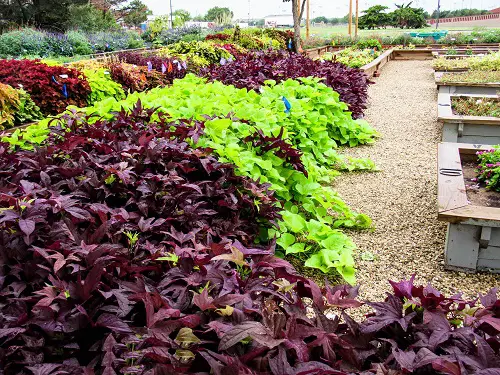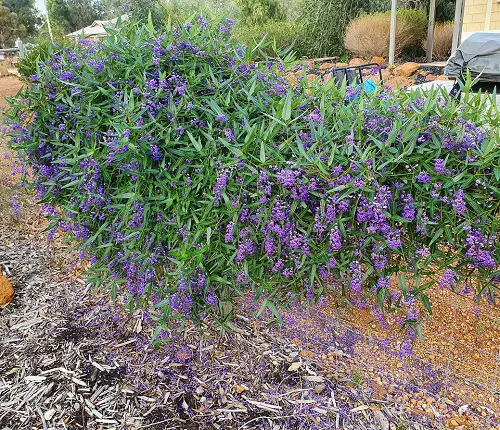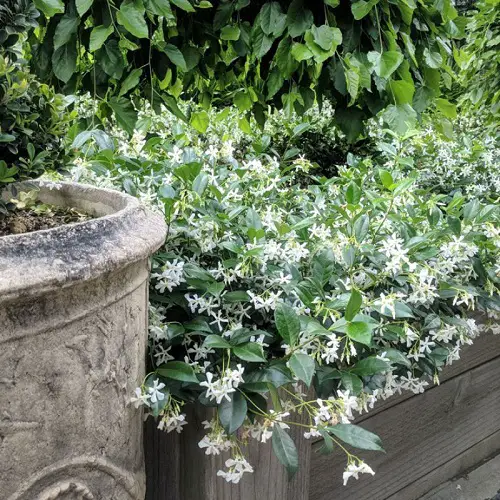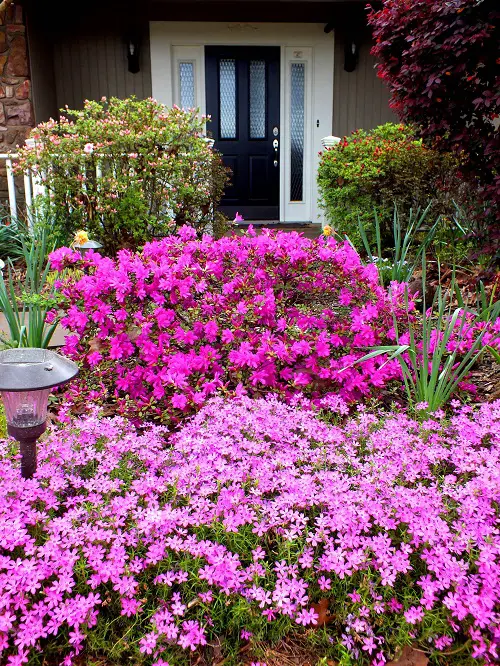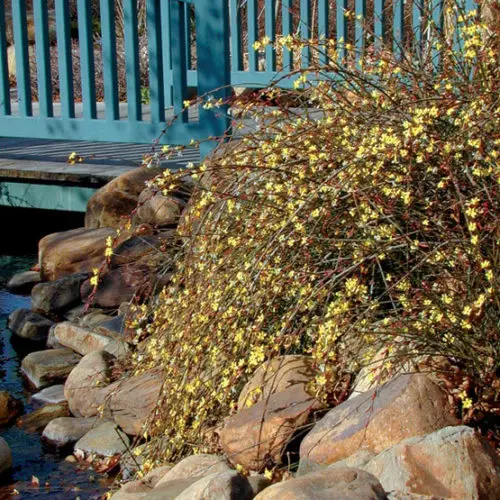Is a portion of your garden waiting to be filled? Check out our list of Vines That Make Good Ground Cover!
Bored of barren, dull spaces in your garden? We’ve handpicked the best fast-growing foliage and flowering vines that make excellent ground covers to add color, depth, and lushness to your landscape.
Vines That Make Good Ground Cover
1. Common Honeysuckle
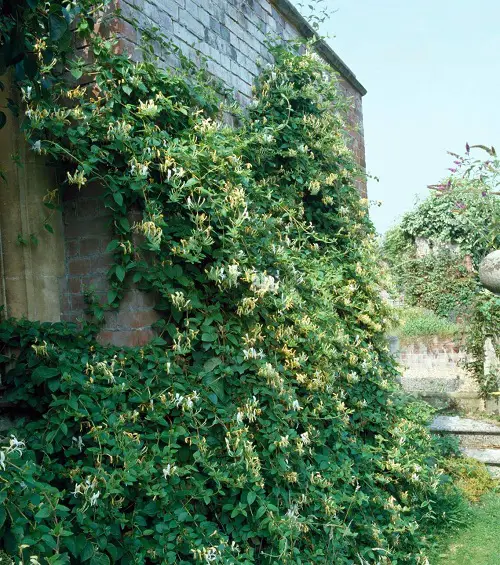 Botanical Name: Lonicera
Botanical Name: Lonicera
Honeysuckle is an arching vine that grows well as a ground cover with support along fences or walls. Its nectar-filled blooms in shades of red, pink, and yellow are known to attract hummingbirds and butterflies, but the species can also be quite invasive.
With regular pruning, this hardy plant can be used to accent, form hedges, or simply allowed to grow wild within limited, sparse areas in your garden.
2. Trumpet Vine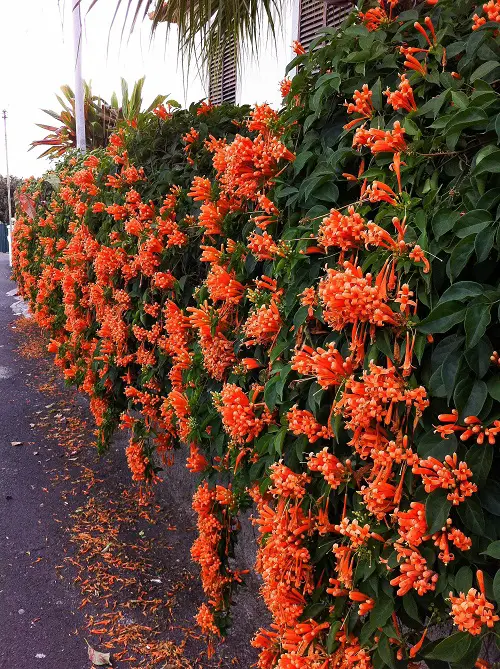
Botanical Name: Campsis radicans
Trumpet Vine bears flowers in shades of orange, red, and yellow between June and September, after which the leaves turn yellow in the fall. Also called the cow-itch vine, it can cause skin irritation and redness if you come in direct contact with it.
Another invader, the problem is in how to contain trumpet vine rather than how to grow it. The best places to grow these self-seeders are near concrete or easily movable spaces and away from children. Also highly flammable, do keep these dangerous beauties far away from your home structure.
3. Periwinkle
Botanical Name: Catharanthus roseus
While not exactly vines, periwinkles have made it to this list for being attractive low-growing ground cover with dense green foliage and blossoms in shades of lavender. With stems that start to root as soon as they touch the ground, this trailing shrub is mostly invasive.
Once established, big periwinkles choke out native plants and change the ecosystem. To enjoy this lush ground cover, keep it in check and plant in shady, empty areas away from essential vegetation.
4. Ornamental Sweet Potato
Botanical Name: Ipomoea batatas
Ornamental Sweet Potatoes have big, heart-shaped, or triangular purple and green leaves that can quickly spread as ground cover, drape over fences and walls, and choke out weeds. Members of the Morning Glory family, their tuberous roots continue to enlarge and spread as the plant grows.
5. Partridgeberry
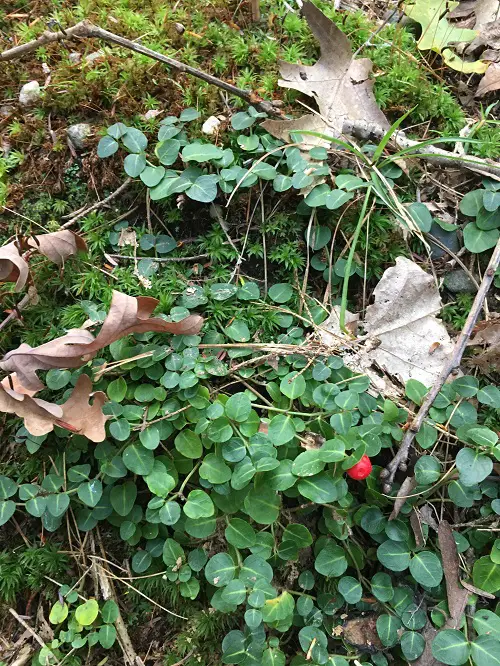
Botanical Name: Mitchella repens
This ornamental plant produces delicate white flowers through spring that morph into mildly tangy, edible red berries in winter. These berries can be used in jams and spreads.
A winter favorite, they form deep green mats in areas where they are planted, branching and sprouting roots at their nodes.
6. Clematis
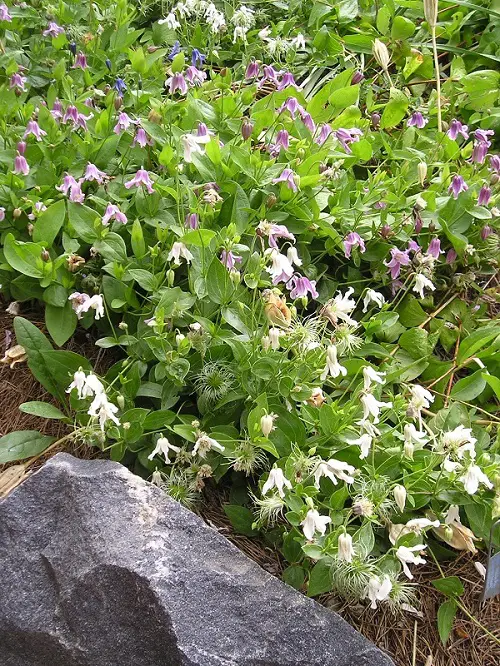
Botanical Name: Clematis integrifolia
Prized for its urn-shaped bobbing blue flowers, this variety of clematis is an herbaceous, woody vine that makes an efficient weed-killing ground cover. This non-climbing vine typically sprawls as a bushy mound and reaches up to 24 inches long.
Grown in mass, plant this variety in sunny spots along pathways, cottage fences, rocky bits, meadows, and garden borders.
7. Purple Lilac Vines
Botanical Name: Hardenbergia violacea
Endemic to Australia, this flowering species is a climbing subshrub often used as an evergreen, dense ground cover up to 6 feet wide. Many cultivars are now available. It wears egg-shaped to long, narrow leaves and drooping clusters of blooms in various shades of purple that are even used to make dye.
Also known as the happy wanderer, it is non-toxic and non-invasive, joyfully providing lush cover to just about any surface and structure.
8. Virginia Creeper
Botanical Name: Parthenocissus quinquefolia
This vigorous spreader is as good at climbing as it is at sprawling, seizing telephone poles, trees, woodland grounds, and just about anything that comes in its way.
With vines growing up to 40 feet long, this fast-spreader sports gorgeous fiery orange fall foliage that can become uncurbed and wild in landscaped areas. Its dark blue berries are loved by birds but are moderately toxic to humans and most mammals.
9. Confederate Jasmine
Botanical Name: Trachelospermum asiaticum
Commonly called Asiatic Jasmine, this evergreen vine has thick green leathery foliage and star-shaped scented white flowers with yellow hearts that make it a magical ground cover.
However, because it is an introduced plant, meaning it can become established and move beyond its natural conditions, it tends to spread aggressively. With a little maintenance and annual trims, you can keep its invasive tendencies in check.
10. Santa Catalina Mountain Phlox
Botanical Name: Phlox tenuifolia
Growing wild in Santa Catalina mountains, this rock climber has sparse, skinny leaves and fragrant white and pink blooms that appear from March to May and continue flowering till summer. Phlox thrives in rocky, dry soil and does really well in part shade.
11. Winter Jasmine
Botanical Name: Jasminum nudiflorum
Winter Jasmine is a noninvasive, cascading shrub that can be trained as a vine. It grows funnel-shaped, unscented yellow blooms in winter and early spring.
Grown in USDA hardiness zones 6-10, it creates rich, sprawling yellow and green carpets over slopes and banks and can reach the length of 4 feet when grown as shrubby mounds.
12. English Ivy
Botanical Name: Hedera helix
Another invader invades our list! With shiny variegated leaves and greenish-white flowers in umbrella clusters, you can allow English Ivy to grow in shady and abandoned spaces.
Also, its berries and sap are toxic to animals and humans. Once these pretty things overrun your garden, they will head straight for your neighbors! So ensure they don’t get out of hand and infiltrate your frequented spaces, which they are highly capable of.
13. Creeping Fig
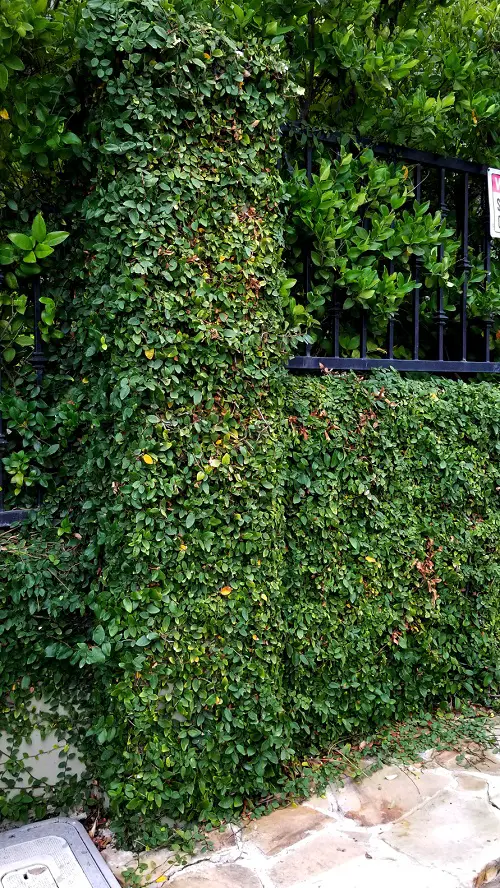
Botanical Name: Ficus pumila
Creeping Fig is a popular vine that forms a dense carpet of small, leathery leaves. It attaches itself to surfaces, and you can also train it to climb walls or grow as a ground cover. This plant is low-maintenance and works well in both sun and shade.
14. Climbing Hydrangea
Botanical Name: Hydrangea anomala subsp. petiolaris
Climbing Hydrangea is a vigorous vine that produces lacy white flowers in summer. It is both a climber and ground cover, supporting itself by either wrapping its vines around a structure or via aerial roots that cling onto surfaces.
15. Pothos
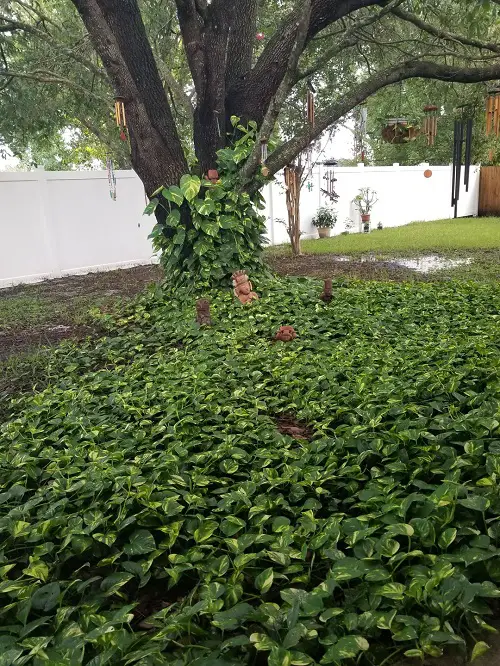
Botanical Name: Epipremnum aureum
A popular houseplant, it can also be a great ground cover. It is simply too easy to grow! With its trailing heart-shaped leaves, it will cover the space in no time, but walking all over it will likely damage the plant. Here’s a list of different ways to grow it.
16. Creeping Jenny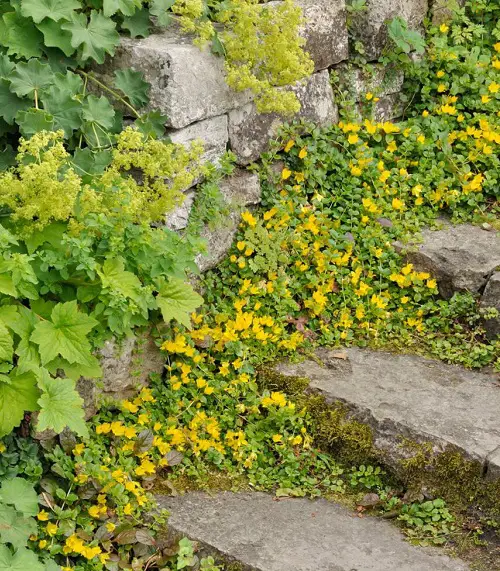
Botanical Name: Lysimachia nummularia
Creeping Jenny is a viney trailer that offers a fresh, lemony green carpet cover for your landscape. As they spread, runners and vines creep along surfaces and plant roots.
Also called moneywort, it has tiny, coin-shaped glossy leaves, forming plush bright mats between rocks, stepping stones, banks, and slopes. It thrives in partial shade and moist soil.
17. Wandering Jew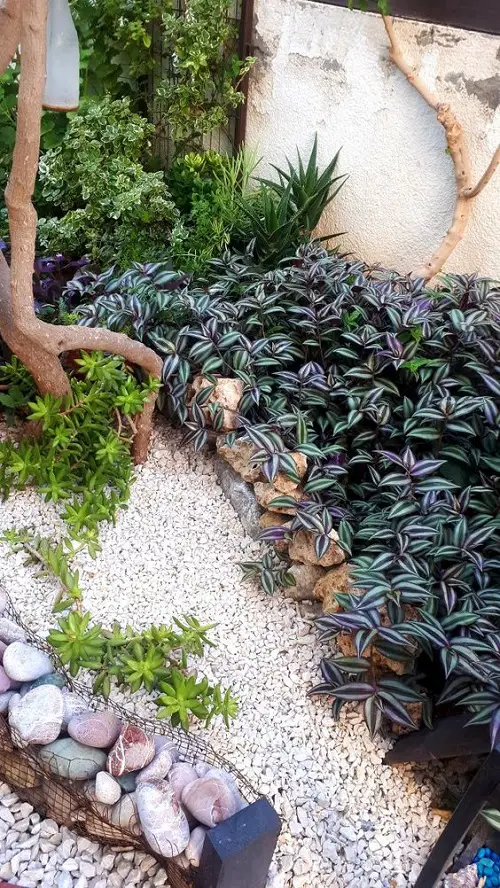
Botanical Name: Tradescantia zebrina
Also known as Inchplant, it has trailing stems with colorful leaves that fall like fountains. It’s easy to care for, preferring moderate light and moist soil. Regular pruning can prevent it from becoming invasive. And the best part–you can also grow it indoors.


